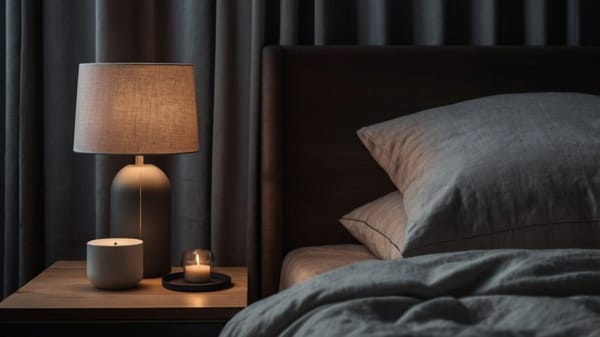What Your Sleep Position Says About Your Health
Improve energy, recovery, and focus by changing how you sleep—learn what your position means and how to upgrade it for better results.

Ever wake up sore, groggy, or just off—despite getting “enough” sleep? The culprit might not be your hours but how you’re positioned during them.
Your sleep position shapes everything from recovery to brain function to how energized you feel the next day. And most people never think twice about it.
If you’re dialing in your health, don’t skip this. The way you sleep could be the easiest upgrade you haven’t made yet.
Sleep Positions: More Than Just Preference
Your body isn’t just “off” when you’re asleep. It’s running diagnostics, repairing tissues, flushing waste from the brain, balancing hormones. Your sleep position either supports that process—or quietly interferes with it.
Let’s break down the common positions and what they actually mean for your health.
Back Sleeping: The Recovery Ally
Sleeping on your back, or supine position, is often hailed as the most structurally sound.
It keeps your head, neck, and spine in natural alignment without added pressure. This position can help reduce tension headaches, relieve sinus buildup, and even support faster physical recovery if you're active or training hard.

But there’s a catch: back sleeping isn’t ideal if you snore or have mild sleep apnea. The tongue can relax backward, partially blocking your airway.
To offset this, try using a low-loft, supportive pillow to keep your neck neutral and elevate your head just enough to stay open but not kinked.
Pro tip: Add a small pillow under your knees. It takes pressure off your lower back and helps maintain natural spinal curves.
Side Sleeping: The Digestive Power Move
Side sleeping is by far the most popular—and for good reason. It can improve circulation, reduce heartburn, and ease breathing.
Left-side sleeping, in particular, is linked with improved digestion and lymphatic drainage. Your organs aren’t just lounging—they’re positioned more optimally for overnight cleanup.
It’s also a great choice if you’re dealing with chronic lower back pain, pregnancy, or mild snoring. Just make sure you're not collapsing into a twisted version of it.
Use a supportive pillow that fills the space between your ear and shoulder, and wedge a cushion between your knees to keep your hips level.
Common mistake: Curling into the fetal position too tightly. It might feel cozy, but it can compress your diaphragm and restrict deep breathing. Aim for a relaxed, open curl—not a full-body clench.
Stomach Sleeping: High Risk, Low Reward
Stomach sleeping may feel instinctive for some, but biomechanically, it’s the toughest on your body.
Your spine arches unnaturally, and your neck gets cranked to one side for hours. This can trigger morning stiffness, numbness, or long-term misalignment.
Still can’t fall asleep any other way? Use a very thin pillow—or none at all—to reduce neck strain. And try placing a pillow under your pelvis to neutralize your spine.
Over time, you can start training yourself toward a modified side position using a body pillow for support.
Bottom line: If you're a hardcore stomach sleeper, be honest about the trade-offs. Then start making small shifts toward a more spine-friendly setup.
How to Shift Your Sleep Position—Without Losing Sleep
You don’t need to force a drastic overnight change. Sleep habits are adaptive, and your body responds well to environmental cues. To retrain your position, your goal isn’t to stay rigid all night—it’s to make your default position work better for you.
Here’s how to set the stage:
- Pillow placement matters. Use pillows strategically to nudge your body into better alignment. Between the knees, under the knees, behind the back—each has a specific role in stabilizing your posture.
- Mattress firmness counts. Too soft, and your body sinks into a curve. Too firm, and pressure points build up. Aim for a medium-firm feel that supports your natural curves without collapsing.
- Stay cool. A cooler sleep environment makes it easier to stay still and reach deeper stages of sleep. That’s when recovery really kicks in.
- Train during wind-down. Practice your ideal position during pre-sleep rituals—reading, breathing exercises, or light meditation. Let your body associate that posture with relaxation and calm.
The goal isn’t perfection. It’s progress. Even if you shift during the night, starting in a better position increases the odds of staying there longer—and getting more out of your rest.
How Your Sleep Position Supports Real-Life Benefits
Let’s get practical. Here's how small positioning tweaks translate to real, noticeable benefits:
- More energy: A better-aligned spine reduces overnight micro-tension, so you wake up without the stiffness or dragging fatigue that comes from poor posture.
- Sharper focus: Deeper, more restorative sleep supports better cognitive function the next day—think memory, decision-making, reaction time.
- Faster recovery: Proper alignment helps muscles fully relax and repair overnight, especially after workouts or physically demanding days.
- Improved mood: Quality sleep reduces cortisol and regulates mood-related neurotransmitters. Positioning helps you reach and stay in deeper sleep stages longer.
- Digestive support: Side sleeping—especially on the left—helps your gut do its job more efficiently overnight, reducing bloating and sluggishness in the morning.
Optimizing your sleep position isn’t a “nice to have”—it’s a fast-track upgrade to everything else you’re already working on.
Final Thoughts: Sleep Smarter, Not Harder
Your sleep position is one of the easiest things to improve—and it can start tonight. You don’t need a total lifestyle overhaul or fancy gear. Just pay attention to how you naturally lie down, then make a few smart tweaks to support your body better.
Small shifts lead to big wins. Better mornings. Stronger workouts. Sharper thinking. Your body’s already doing the work—it just needs the right support.
Start now. Tune into your position tonight. Make one simple change. Wake up tomorrow already better.




